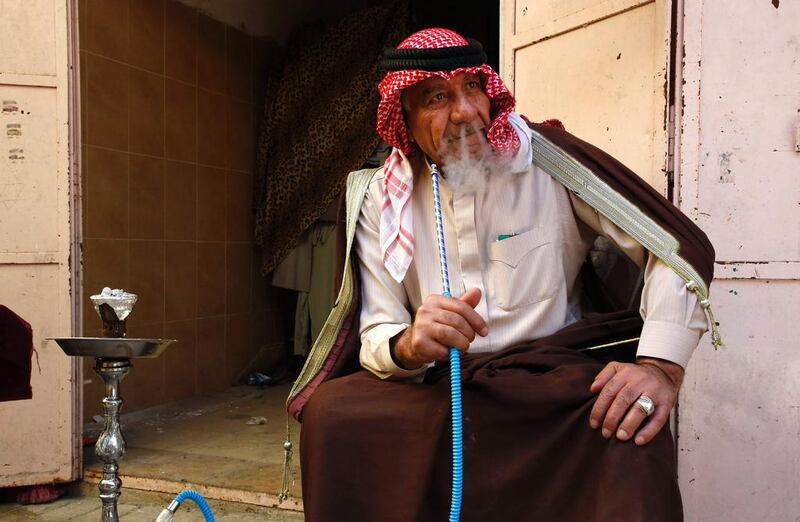HEBRON, PALESTINIAN TERRITORIES // Its Old City is in constant lockdown, its holy site where the biblical Abraham may have been buried guarded by Israeli soldiers at checkpoints.
Fifty years after the Six-Day War, the ancient city of Hebron, set in the hills of the southern West Bank, has become perhaps the starkest symbol of Israel’s occupation. Several hundred Israeli settlers — many of them especially hardline — live in the centre of the Palestinian city of some 200,000 residents.
Israeli soldiers keep a close watch, and parts of the city are off limits to Palestinians.
For Palestinian residents of Hebron, the Six-Day War marked the end of “a golden age,” says Eid Jaabari, who was 21 at the time of the conflict that saw Israel clinch victory over neighbouring Arab countries and seize swathes of territory.
“There was no fighting, the Arabs had withdrawn,” says Mr Jaabari. He saw troops from Jordan, which had controlled the West Bank, leave without firing a single bullet.
Israeli forces seized Hebron from Jordan on June 5, 1967, the first day of the Six-Day War and, at first, the return of Jews did not cause tensions.
Palestinians recall having good relations with the Israelis in those early years in Hebron’s Old City, which borders the holy site known to Jews as the Tomb of the Patriarchs and to Muslims as the Ibrahimi Mosque.
The site is where Abraham, revered by Christians, Jews and Muslims, is believed to have been buried.
“The Jews wanted everything to remain calm,” recalls Abdel Rauf Al Mohtasseb, who runs a stall in the Old City. Their arrival even created jobs, he added. The Old City was a hive of activity.
“There was so much jostling, you couldn’t put one foot in front of the other,” says Mr Jaabari.
Things changed in the late 1970s when the Israeli government agreed to settler demands and authorised an Israeli civilian presence in the heart of the city.
Areas of Hebron are now closed to Palestinians, the streets abandoned, ghost neighbourhoods with iron padlocks rusting on doors.
Hebron is the only Palestinian city inhabited by Jewish settlers, in contrast with other parts of the occupied West Bank where settlements sprawl over hills outside major Palestinian population centres.
Hebron even has its own status that divides the city, leaving a handful of settlers in certain sectors surrounded by checkpoints and hundreds of soldiers and curtailing the free movement of Palestinians.
Yet many of the city’s Israeli settlers say it is they who feel besieged.
“I have no problem with the Arabs living here, if it is quiet, ” says Gabriel Ben-Yitzhak, a scribe
“But it is not possible that we are in a constant fear of someone coming to stab us.”
Hebron has for decades seen major unrest and was a focal point of the wave of Palestinian knife attacks that erupted in October 2015. Violence in the city peaked in 1994 when Israeli-American Baruch Goldstein shot dead 29 Muslims as they prayed in the Ibrahimi Mosque/Tomb of the Patriarchs.
Since then, the site — divided into a mosque and synagogue — is the scene of regular violence.
While the settlers call for Israeli security control over the entire city, the Palestinians say the settlers’ aim is to force them, the Palestinians, out of their own city.
“What they want is a land with nobody on it, but the Palestinians are here,” says Mr Mohtasseb, 59. “We can all live together, but the land and the houses are ours. I want to welcome guests, but not armed ones.”
* Agence France-Presse





